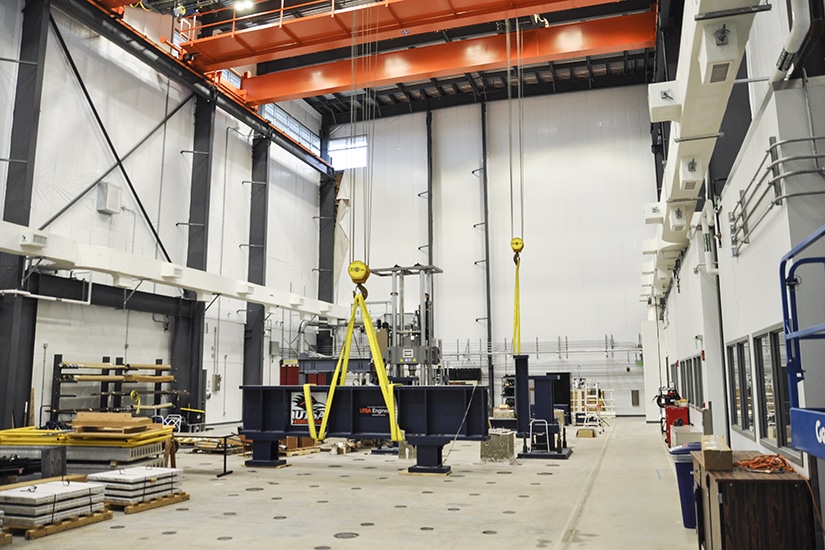|
Getting your Trinity Audio player ready...
|
Armed with a mechanical engineering degree, Paul Goodman started his career with a string of interesting jobs. First, he was a patent examiner in Washington, DC. Then he worked for a shipbuilding company. Goodman even went out to sea, but for someone who stands at six foot three, life on a submarine is difficult. While Goodman enjoyed visiting the DC area museums and historic sites with his wife, they longed to return to their native Texas, put down roots, and contribute to the local community. Goodman started designing equipment for a San Antonio power company. He was finally back in Texas, but the job lacked local ties and required frequent travel. It was time for a change.

That’s when Goodman saw an ad in his local paper. The University of Texas at San Antonio (UTSA) was hiring someone to oversee facilities maintenance and construction projects. He jumped at the opportunity. “I spent the first decade of my career just working jobs. I wanted to find a position where I could make a real contribution for the greater good,” he says.
After starting with UTSA in 2000, Goodman had a choice to make. Would he keep pressing on as a technical engineer or move toward upper management? A desire to grow into a leadership position led him to enroll in an MBA program. At the same time, medical issues surfaced. Goodman’s wife became pregnant but suffered from eclampsia that resulted in emergency delivery of their first child. The event validated Goodman’s choice to stop traveling and work for UTSA instead. The job stability and strong workplace culture allowed him to stay in town and get his family through a troubling time.
That strong culture, coupled with the opportunity to improve the student experience and make an impact on society, has kept Goodman at UTSA for more than two decades. Today, as associate vice president for facilities, he oversees maintenance and operations and is responsible for master planning and executing all projects under $10 million.
With more than 34,000 students, UTSA is the largest public university in its region. A dedicated team of 140 employees provide maintenance, housekeeping, grounds, and project management services. As its leader, Goodman has focused on maintaining the strong culture that first attracted him to the job. “Two things are most important when it comes to building a good team,” he says. “Fairness and respect.” Goodman wants everyone in facilities to take pride in their work. He sets the tone by establishing clear job descriptions and then follows up by publishing processes and setting measurable benchmarks.

The approach creates satisfied and long-tenured employees. Together, those employees achieve dramatic results and bring dynamic spaces to the UTSA campus. One such space is a unique hands-on outdoor science classroom known as the Cypress Living Laboratory. The $1.8 million facility ties into a creek ecosystem and will utilize associated environmental education opportunities. Goodman and his team worked with faculty to develop a 2,000-square-foot building replete with a green roof, bioswale and bio retention zones, and low-impact components that manage storm runoff. The living lab, which is meant to attract K-12 students, is the first structure on what will grow into a full nature area on an 11-acre parcel reserved for UTSA’s College of Sciences.
Another one-of-a-kind project will help researchers simulate earthquakes and test load capacity on steel beams and other massive objects. The 15,000-square foot, 50-foot tall, $10 million building known as the Large-Scale Testing Laboratory (LSTL) includes two 30-ton cranes, but perhaps its most impressive feature is a strong floor. The unusual floor is filled with rebar and measures 40 by 80 feet, with its thickness ranging between 3 feet and 5 feet 6 inches. Holes through the strong floor allow workers to anchor specimens as long as 90 feet and create reaction loads up to 4 million pounds using a hydraulic system beneath the floor. Once the hydraulic system is activated, researchers test how much force their specimen can withstand.

Sometimes, working in higher education requires creative problem solving. That was the case in 2017, when UTSA’s new president approached Goodman with a problem. Since each of the university’s colleges had its own advising center, students lacked a central source of information. The president wanted all advising immediately housed under one roof until the budget allowed for a permanent solution.
Goodman turned to modular building at an unprecedented scale to create a new Student Success Center. He shipped in and stitched together 46 trailers with one seamless roof and a thin set brick facade. Goodman’s team solved complex technical challenges and completed the entire project for under $250 per square foot total project cost.
As Goodman walks the UTSA campus, he can see the fruits of his labor. That’s what he likes most about working in higher education. “We know that our work makes a difference,” he says. “And when these students earn a degree, everyone on my team knows that we’ve played a small role in making that happen.”

